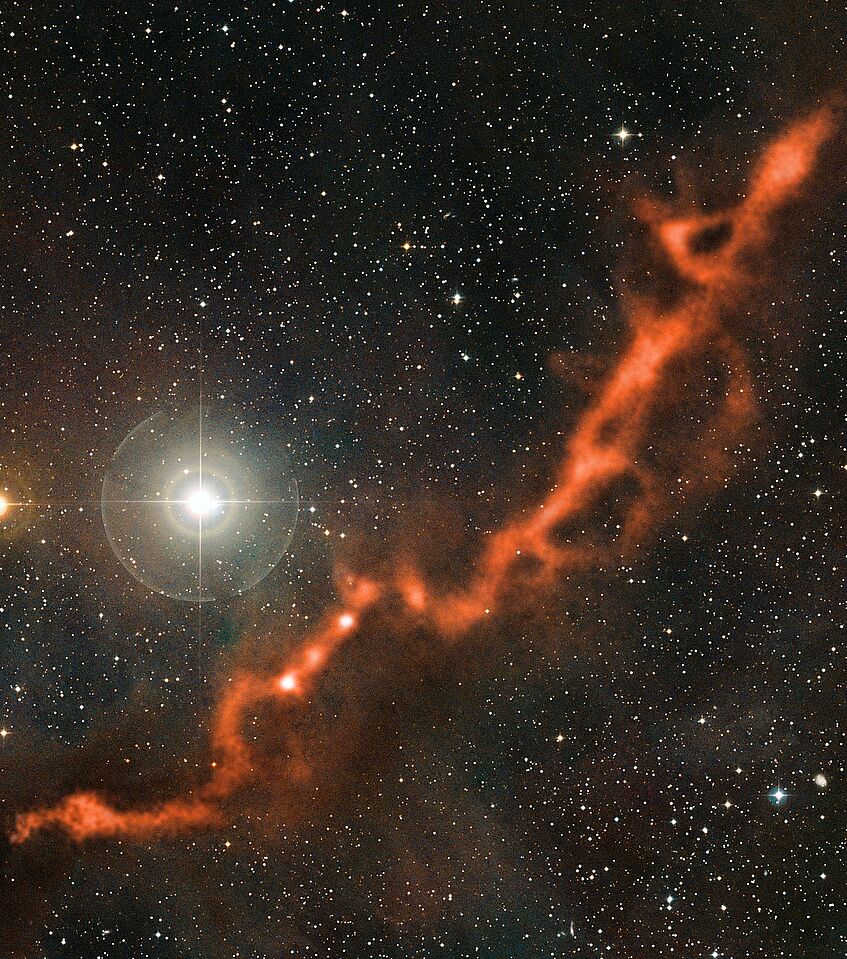Review: Stars are born inside large filaments of gas
Stars are born inside long filaments of gas and dust with sizes of up to hundreds of light years in length. Understanding how these filaments form and evolve is key to investigate the origin of the Sun and solar system. A comprehensive review of the physical properties of these filaments in the interstellar medium has been put together by a team led by Alvaro Hacar from the University of Vienna and will be presented in the Protostars and Planets VII Conference (PP7) which will be held in Kyoto, Japan in April 2023. During the next months the manuscript, which was published today on ArXiv, will be discussed by the astronomical community to prepare a final version for this summer.
The Protostars and Planets Conference takes place every five to ten years. Its aim is to summarize the state-of-the-art and progress achieved in the research fields of star and planet formation within the last decade. This conference is the largest in the field, gathering more than 700 astronomers. The last conference took place in Heidelberg, Germany in 2013. PP7 was planned originally for April 2021, but had to be postponed twice due to travel restrictions linked to the COVID-19 pandemic.

Taurus molecular cloud.
Credit: ESO
“The team members of this review have participated in previous editions of this conference series; which contents have been fundamental for the development of our own research areas. We wanted to contribute to this international effort with our work. “, comments Alvaro Hacar.
Top experts in the field contributing to this review include Rowan Smith (University of Manchester, UK), Susan Clark (Stanford University, USA), Gina Panopoulou (Caltech, USA), Fabian Heitsch (University of North Carolina, USA), Daniel Seifried (University of Cologne), and Jouni Kainulainen (Chalmers University of Technology, Sweden), bringing together expertise on observations, theory, and simulations.
“The success of this review is based on the key contributions of all team members”, highlights Alvaro Hacar.
Research on filaments has been revolutionized in the last decade thanks to observations with space telescopes, such as the Herschel Space Observatory, and with ground-based radio facilities, such as the Atacama Large Millimeter Array (ALMA). Nowadays filaments are regularly observed in our own Galaxy, the Milky Way, and in other nearby galaxies, like the Magellanic Clouds. Filaments seem to be ubiquitous gas structures playing a fundamental role in setting up the initial conditions for the formation of stars. However, the exact physical mechanisms governing their formation and evolution remain an open question, turning this into a hot topic within the astronomical community. Using a novel meta-study, this review aims to bring a fresh and innovative perspective to the study of filaments.
“Nine years ago, just after finishing my PhD, I was awarded with one of the two poster prizes in the Protostars and Planets VI in Heidelberg. It was the first time I got to show my work to such a large audience. Now I can contribute to this ongoing international effort leading one of its chapters, and hopefully setting the foundations for new exciting discoveries in this field” concludes Alvaro Hacar.
Scientific contact
Assoz. Prof. Dr. Alvaro Hacar Gonzalez, MA
Türkenschanzstraße 17 (Sternwarte)
1180 Wien
Room: 002.4
